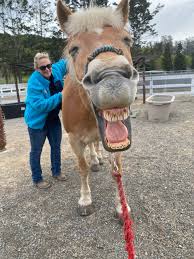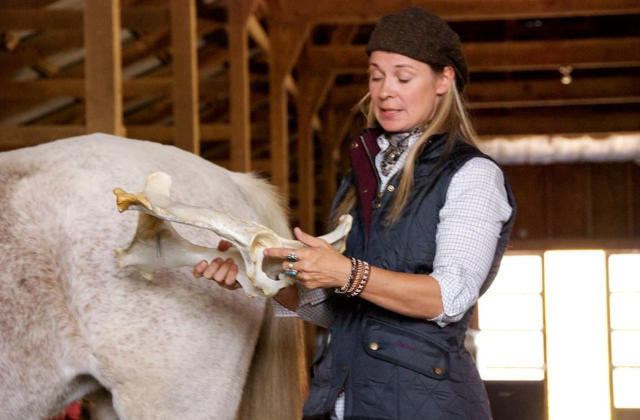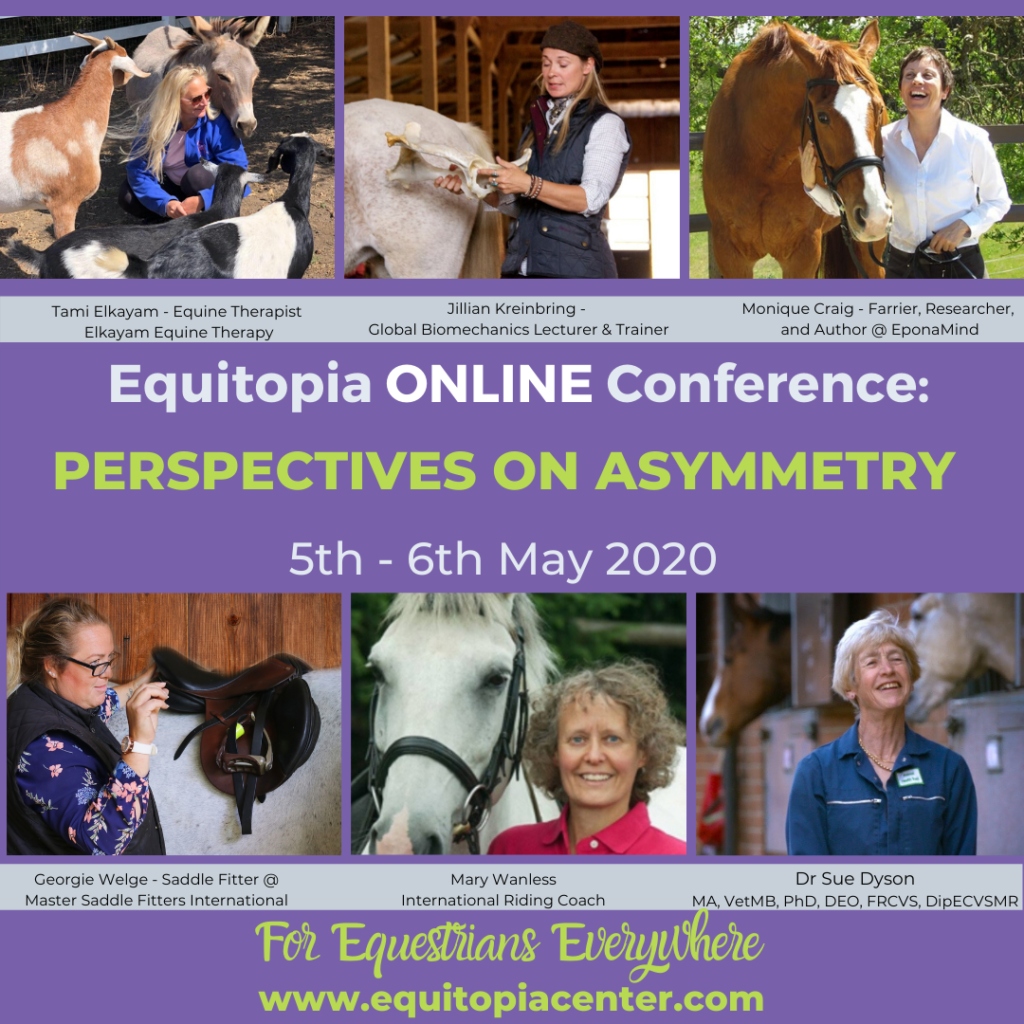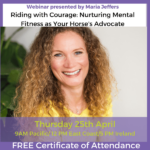AN EQUITOPIA CONFERENCE: PERSPECTIVES ON ASYMMETRY – PART ONE
In early May, while most of the world was still on lockdown, Equitopia hosted our first and definitely not last online conference! The topic was asymmetry – an important subject for equestrians everywhere. During the two-day conference our six speakers looked at asymmetry in horses from several different perspectives, from saddle fit to rider balance and equine biomechanics. Asymmetry is an inevitable part of life and it plays a huge role in how we train, treat and look at horses, so it is important to know just how much it can impact what you do with your horse and how to distinguish between functional and dysfunctional asymmetry.
TAMI ELKAYAM: EQUINE THERAPIST AND BODYWORKER
 The conference kicked off with Tami Elkayam, equine therapist and bodyworker, who describes part of her work as the art of reading asymmetry – it can tell us what is going on in the horse and how all its experiences in life have culminated into the horse in front of us. By recognising asymmetry and the associated tension in the horse’s body we can create a plan to return the horse to function. Asymmetry is part of life and it happens to all of us. In horses (and people too), asymmetry starts as early as gestation and foalhood and is later affected by training, hoof care, saddle fit… all of this can lead to more and more asymmetries in the horse’s body. Eventually, they may start to create imbalance, which will lead to compensation – restriction in the tissue.
The conference kicked off with Tami Elkayam, equine therapist and bodyworker, who describes part of her work as the art of reading asymmetry – it can tell us what is going on in the horse and how all its experiences in life have culminated into the horse in front of us. By recognising asymmetry and the associated tension in the horse’s body we can create a plan to return the horse to function. Asymmetry is part of life and it happens to all of us. In horses (and people too), asymmetry starts as early as gestation and foalhood and is later affected by training, hoof care, saddle fit… all of this can lead to more and more asymmetries in the horse’s body. Eventually, they may start to create imbalance, which will lead to compensation – restriction in the tissue.
Asymmetry in one part of the body can influence not only the visual appearance, but also the function of other parts of the body. A great example of this is the TMJ. Observing this joint alone can give us important information on motion, posture and proprioception of the whole horse. Asymmetries in the temporal bones often mirror asymmetries in the hind legs. Of course, asymmetry isn’t only present in bones, very often we can observe muscle asymmetry in muscles and fascia as well. This gives us information about how the horse is using his body to generate movement.
Always keep in mind, Tami says, the horse is not the only variable. Riders often tend to focus solely on their horse’s physical state and neglect their own. But humans and horses affect each other and our asymmetries and dysfunctions can create an even greater asymmetry for both. Good training should not focus solely on the horse, the aim of training should also be to address the rider’s asymmetry and dysfunction. Bodywork is one tool with which to achieve functionality, but don’t forget that bodywork alone will not solve all your issues. All the boxes need to be ticked in order for the horse and rider team to reach their full potential and remain healthy doing it.
JILLIAN KREINBRING: BIOMECHANICS LECTURER AND HORSE TRAINER
 Following Tami’s fascinating presentation, we delved into some functional anatomy with Jillian Kreinbring, world-renowned anatomy and biomechanics lecturer as well as an amazing horse trainer. Jillian talked about the anatomy and biomechanics of the thoracic sling and implications of asymmetry in this complex area. Although all horses are asymmetric by nature, our goal should be to straighten the horse allowing his left and right side to work optimally.
Following Tami’s fascinating presentation, we delved into some functional anatomy with Jillian Kreinbring, world-renowned anatomy and biomechanics lecturer as well as an amazing horse trainer. Jillian talked about the anatomy and biomechanics of the thoracic sling and implications of asymmetry in this complex area. Although all horses are asymmetric by nature, our goal should be to straighten the horse allowing his left and right side to work optimally.
The thoracic sling is a big part of this puzzle, as it is a direct link between the horse’s front legs and the rest of his body. In outlining the anatomy of this region, Jillian expanded on the implications of the fact that the horse’s front legs are attached to the spine only via soft tissue. This means any restrictions in the soft tissue structures that make up the thoracic sling will have a huge impact on the horse’s way of going. The sling muscles are often weaker in one side, resulting in an asymmetric function. Horses tend to naturally collapse weight onto one shoulder when turning, which creates imbalance. To correct this, one of the most important goals of training is to educate the horse to use his outer forelimb to support the inner forelimb while turning. This will result in the horse being more vertical when turning and thus more balanced. In addition to correct and healthy training, some exercises that can be beneficial for developing a strong and healthy thoracic sling include hill work, cavaletti exercises and a step-up pedestal. These are exercises that not only help your horse develop (if done correctly, of course), they are also a fun way to create variation in your training!
A 6-part online course based on the online conference is available at the Equitopia shop.
PARTS TWO AND THREE OF THIS BLOG ARE AVAILABLE FOR EQUITOPIA MEMBERS – SIGN UP HERE




